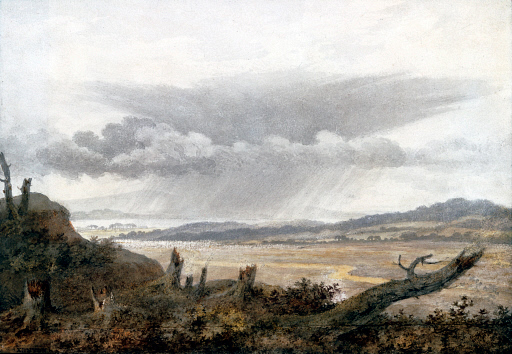Stare up the sky and what can you see hiding amongst the clouds? Mythical creatures perhaps or maybe your neighbour’s dog chasing a ball. Spotting shapes in the sky is fun, especially on a sunny day. The amateur meteorologist Luke Howard looked up and classified these wisps of white, changing the course of meteorology forever.
Luke Howard had been inspired by nature from a young age. Born today (21 March) in London in 1772 Howard developed his childhood passion and became an amateur meteorologist. He even built a laboratory at his home filled with instruments to analyse the weather. Even though his day job was manufacturing chemicals for the pharmaceutical industry, Howard’s scientific work changed the way we understand the climate around us.

Before the 19th century, many meteorologists thought of each cloud as unique, unclassifiable and in a state of temporary existence. Instead of strict descriptions clouds were recorded by colour or individual interpretation.
This all changed when Howard presented his Essay on the Modification of Clouds to the Askesian Society in 1802. The impact of this work was immense, elevating the natural phenomenon to the realms of worthy scientific investigation.
Founded in detailed observations, with a pinch of imagination, these cloud types were; cumulus, Latin for ‘heap’; stratus, Latin for ‘layer’, and cirrus, Latin for ‘curl of hair’. Words we still use today.
Luke Howard captured these transient phenomena in delicate, though scientifically scrutinised sketches.
The Science Museum Group has a rich collection of these images in a range of medium from pencil to watercolours, with some on display in our Making the Modern World gallery.
It has been argued by historians of art and science that Howard’s contemporary John Constable was influenced by this new meteorological theory and visible in his powerful landscapes.
Not only did Howard’s images inspire great art but so did his published essays which stimulated the imaginations of the poets Johann Wolfgang von Goethe and Percy Shelly.

Even though Luke Howard was only an amateur meteorologist he believed strongly that developments in science depended on accurate data gathering.
By taking daily observations of temperature, rainfall, atmospheric pressure and wind direction from his home in Tottenham, Howard became one of the first pioneers of urban climate studies.
He published the first two volumes of The Climate of London deduced from Meteorological Observations at different places in the Neighbourhood of the Metropolis in 1818 and 1820, followed by an extensive second edition in 1833.
Howard noted the changes in weather religiously for over 30 years recording his results in tables and innovative graphics.
Discover more about Luke Howard’s sketches in this film: